
Essential Guide to Successful Client Project Management
- May 21, 2024
- 11 Min read
PricewaterhouseCoopers reports that 97% of organizations consider project management crucial to service business performance and organizational success in today’s marketplace. Effective client project management plays a vital role in keeping existing clients happy while winning new ones – knowing your customer and their requirements can greatly assist your success, regardless of whether you have years of experience managing projects or are just getting started in business.
Service providers may find it daunting to meet client expectations, but by using project management tools such as client portal software and following some tips, they will not only meet customer demands but surpass them – ultimately growing their business!
This blog will delve deeper into client project management, its phases and how you can strengthen relationships with clients.
What is Client Project Management?
Client project management refers to organizations or firms engaging with their client actively throughout the lifecycle of a project in order to meet client expectations, streamline communication and put client requests at the center of decision-making processes. Client project management emphasizes cultivating strong client relationships while meeting results that align with clients’ goals.
There is some overlap with normal project management in day-to-day work. The project manager or team leader will create deliverables and schedule tasks. They’ll also plan and organize the entire project management process.
Client projects vary significantly in that you must also establish client communication plans, manage scope creep and establish client relationships in addition to overseeing internal teams and external stakeholders.
One key difference in client project management lies with communication – which often presents a project manager with tricky situations. Clients may not fully comprehend your industry and may also face their own profit pressures.
4 Stages of The Client Project Management Process
Project management involves four distinct phases that can be applied both externally and internally for client-focused and internal initiatives.
Initiation
An early project launch is essential in setting expectations, setting timelines, identifying needs and gathering detailed project information – it’s an integral component of its success!
However, before diving in too quickly, it’s essential to thoroughly research and plan out the scope and vision for your project. Setting expectations correctly with clients may prove tricky when they can’t explain exactly what they require or want, making client management essential in gathering clear requirements from stakeholders in the early stages.
At this stage, it’s common to create a project charter document. This straightforward outline covers key details about finishing the project without overwhelming project team members.
Planning
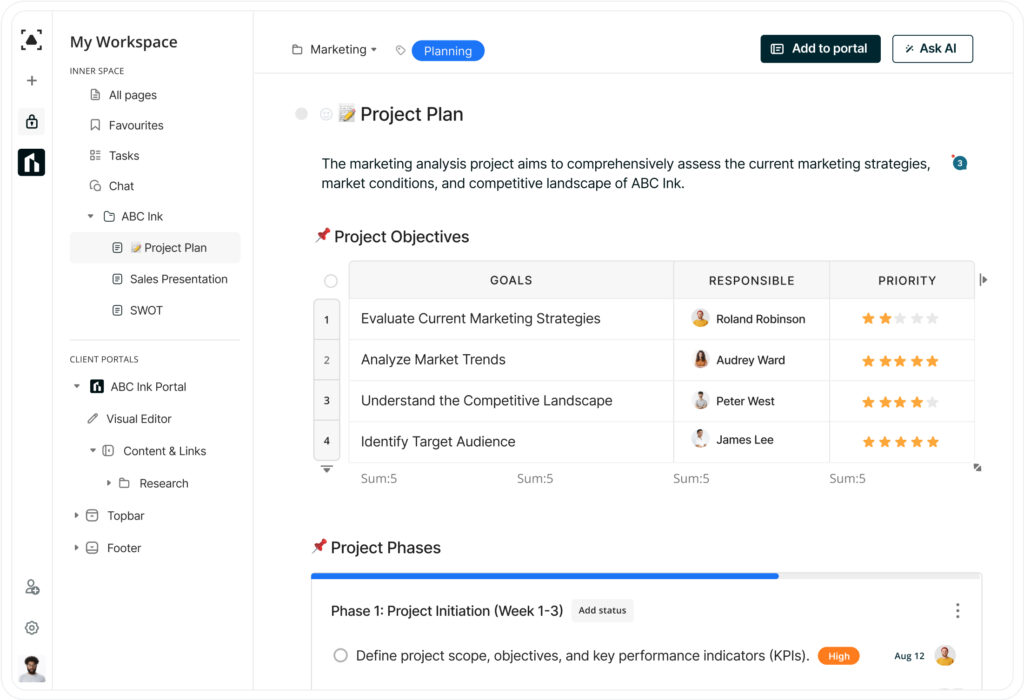
It’s now time to begin planning. The planning phase is often overlapping with the initiating stage. However, it’s worth mentioning because there is a lot of work involved. This is where you will create your project’s schedule and the statement of work.
A project manager must create a plan and divide it up into tasks manageable by both the internal team members and the client. In this section, you will add deadlines for the project, set milestones that are clear and create tasks for all participants.
It also includes client project work. You should consider where your clients may need to contribute, like with reviews and approvals. Think about if your team needs something from the client to do their work.
Establish realistic time frames for clients to finish the task. Make sure you communicate your expectations and that the client can easily do his or her part.
Execution
Once a comprehensive and precise project plan has been drafted, its implementation becomes the next step in the project execution phase. Producers will take responsibility for producing deliverables as the next stage in project delivery.
As a project manager, your role now shifts significantly. Supporting project team members as they overcome any hurdles will likely become necessary; while as a team leader, you are responsible for overseeing all workflows and taking immediate steps should anything go wrong, be delayed or be incorrectly produced.
As your project advances, so will your involvement as an expert communicator. Regular updates from other departments, as well as your team, may be essential.
Resolve any conflicts that may arise within your team or between customers, be they internal or external. Assist team members during difficult discussions or step in when needed.
Closure
Ensure a seamless close and off-boarding of client projects, taking great care to address loose ends or any outstanding issues so as to leave clients happy with the end results of their jobs. Use this time as an opportunity to highlight the positives of the job, address concerns or suggest improvements, build healthy client relationships and establish new contracts in future phases. Communication, detail-oriented work ethic and willingness to extend scope are crucial parts of ensuring a smooth closure and off-boarding phase that ultimately increases the chances of future contracts being won.
10 Tips to Follow for Effective Client Project Management
Combining various best practices for client project administration will take it to another level. While success cannot be reached solely via one formula, you can build strong, long-lasting relationships with clients by employing appropriate client management techniques. We’ll delve right in on some common best practices for client project managers!
Set clear expectations from the outset
Establish clear expectations at the outset in order to prevent miscommunications and decrease scope creep. When managing clients with various demands and expectations, it’s vital that all parties involved remain on the same page from day one in order to maximize communication and maintain long-term relationships without disappointment and frustration from unrealistic expectations.
Establish preferred communication channels
Project management success is built on effective communication. Create clear channels for communication that are regular and consistent with your client. Clients prefer to use different communication tools and different channels. Instead of allowing all your employees to be invited into dozens of third-party apps, it is better to centralize workflows on a single platform like a client portal. Clients can be onboarded to a project management platform that allows everyone to work under the same roof. It will keep them informed of the project status and any challenges and changes to the scope.
Use a client portal to implement effective client project management software
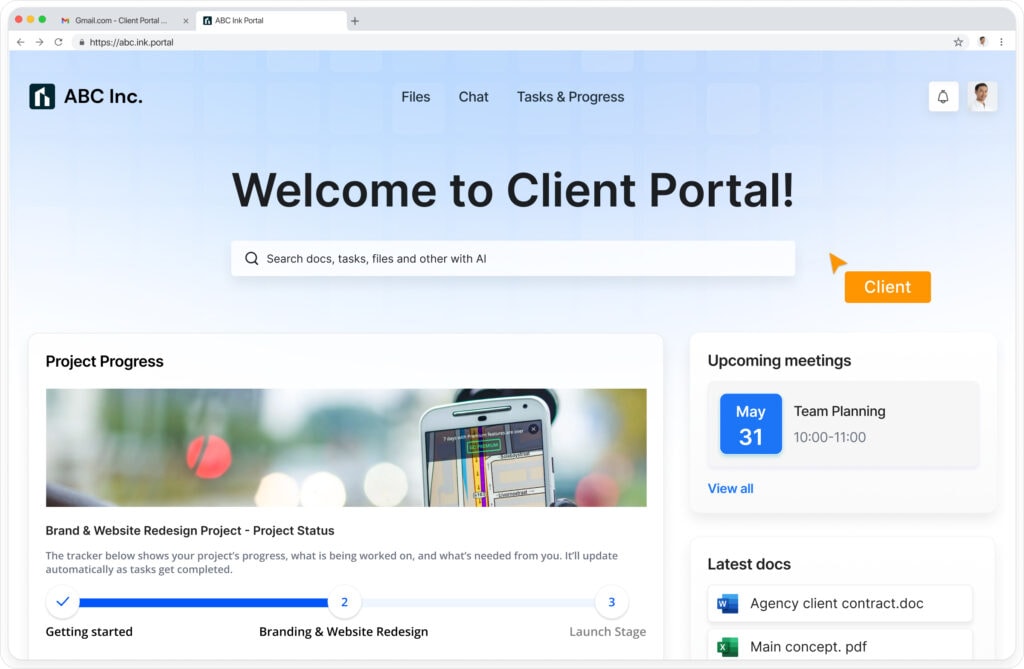
As it can be easy to misplace information when managing multiple projects at once, keeping all project info in a centralized location can make life much simpler – this is where a client project management software comes in handy. Its intuitive interface simplifies the learning curve and enables tracking every aspect of each project detail.
To simplify your service business and expand its potential, invest in effective project management software with a client portal. Client portals are essential tools in overseeing client projects and identifying their key aspects quickly. Its multiple features can help track progress and client tasks, manage contacts, generate reports, etc. In addition, clients and colleagues can work more collaboratively as important information can easily be located in one robust platform. Clients will feel more at ease knowing where they can go for clarification or updates about a particular project.
Be transparent in dealing with your client
Transparency can really help when it comes to managing client relationships. Your client is paying you or your company to complete a project. Why wouldn’t you want them to know all about your processes and the way that you decide on projects?
There must be no mystery when it comes to completing a project. Does something pose a problem for your team or yourself? Talk to your client about it. It’s possible that your client has a completely different view of the issue. You can reach a consensus by involving clients in decision-making before you even present ideas.
Work smarter, not harder
It is not necessary to work harder to meet the needs of your client. Instead, aim to be smarter. Workflow automation has the potential to revolutionize project management. You can automate admin work and focus your efforts on client-facing activities by embracing workflow automation.
Those who do not use workflow automation run the risk of being left behind as more and more businesses explore the potential of automation. Project workflows have never been faster and this allows teams to concentrate on client tasks of high value. The service team is leveraging automation of workflows to boost their productivity and be more efficient.
Request timely feedback for on-time project delivery
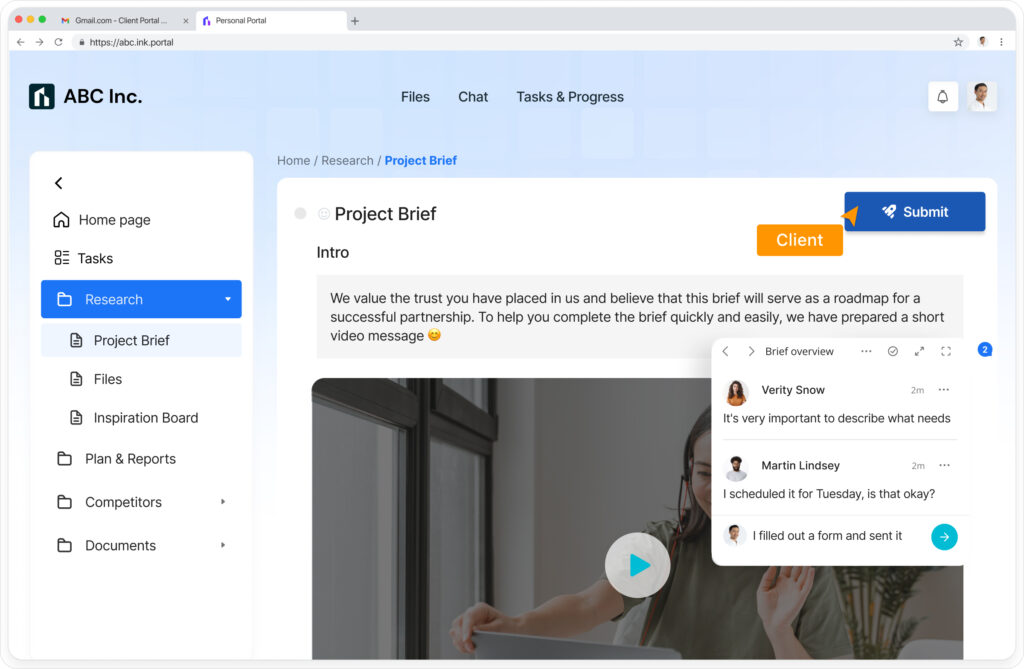
There are clients who want to view project progress and be involved in every stage. On the other hand, there are those who just want the end results. The problem? You don’t want to mess with either!
A client with a need for constant updates can disrupt your workflow. This will break continuity and cause the project to be interrupted. A client that only wants to see the end result may also send the project in the wrong direction.
A client who refuses this oversight will not be able to determine if the project is on track and is achieving its goals. To ensure your project remains on track, you should set up regular reviews with clients to gain effective feedback and continue on the ideal project execution path. Again, you can utilize the right project management software with a client portal to obtain instant feedback from the task comments.
Create realistic and attainable goals
As you decide what goals are realistic or not, be wary of client uniqueness when making assessments regarding realistic expectations for them. Keep this in mind when setting client-related deadlines or goals that could potentially become unrealistic due to delays, poor decision-making ability, or communication problems.
Stick to deadlines and milestones
Once your goals have been set, remain true to them. Not only will doing so help ensure customer satisfaction, but also meeting milestones and deadlines will help showcase your credibility and reliability as an expert in your field.
Respect your client’s time
Last but not least, it is important to understand your client’s valuable time. Most likely, they hired you to take care of their work or to relieve them from that burden. The reason is that they are trying to keep up with the latest developments but do not want to spend time on it or have to make all of the decisions.
Better Manage Client Projects With FuseBase
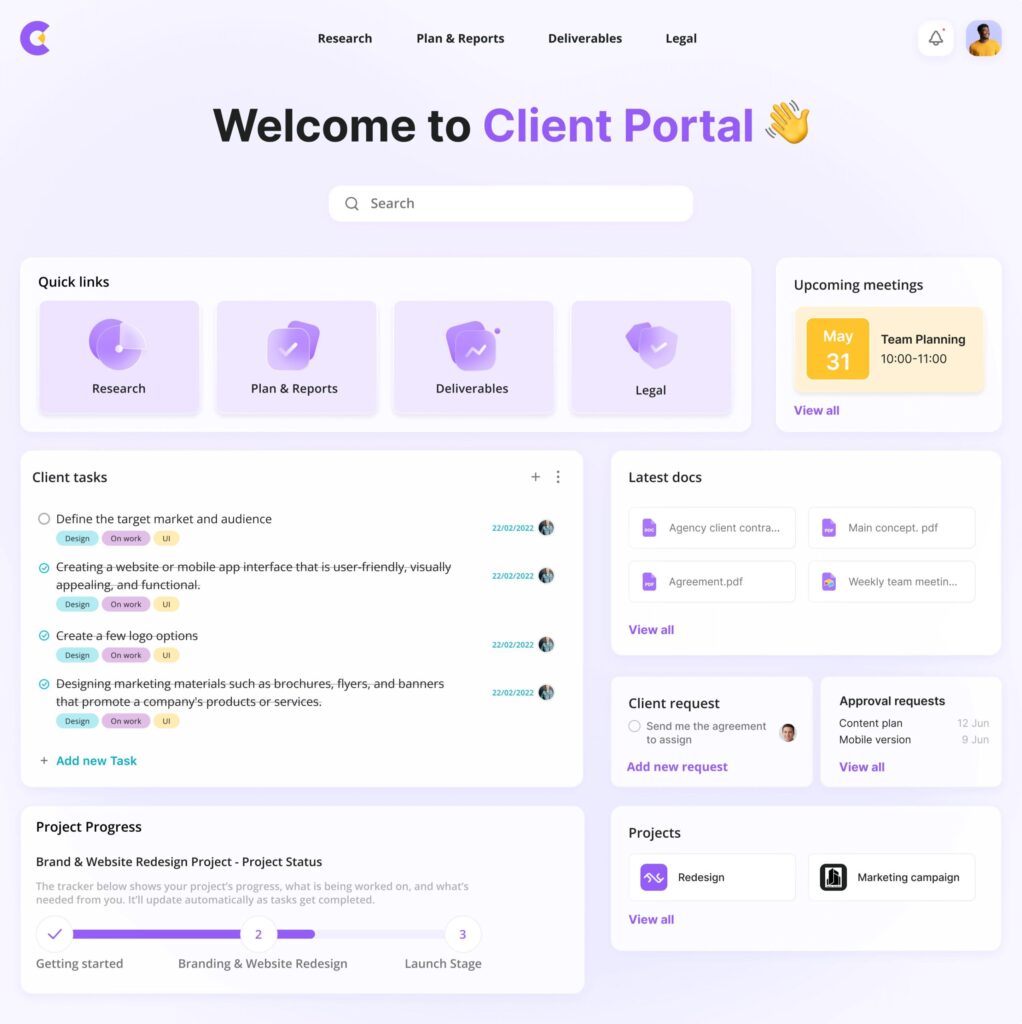
As previously discussed, at the heart of successful project management lies finding the best project management software with client portal functionality. FuseBase offers an effortless client portal solution that makes managing client projects seamless – providing space for customers and project managers to track project progress with secure document sharing.
FuseBase allows you to quickly and efficiently organize a workspace for each project and invite team members who will contribute. By sending a link, you can invite clients to join your project on the client portal. Its simple-to-use interface makes client onboarding seamless and quick and its real-time access gives them control over every stage of the work.
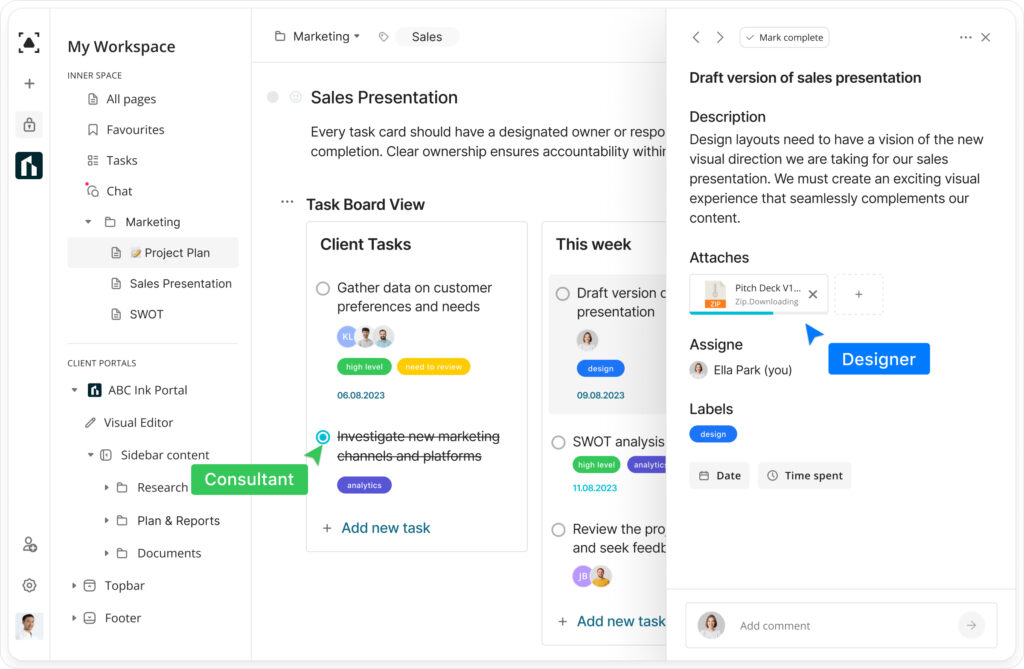
Multiple task management features enable you to assign tasks, add descriptions, track deadlines & priority levels and organize them on a Kanban board. To ensure projects stay on schedule, establish a time to be spent on each task. Built-in progress bars help to monitor project advancement and understand which activities are currently underway. Besides, creating client dashboards offers quick snapshots of important project information relating to ongoing work and the development of specific processes towards them. This increases client interaction while giving confidence about the progress being made!
Project management software with a client portal promotes real-time collaboration tools among team members and clients, streamlining discussions, approval processes and feedback collection. Furthermore, customers can utilize the client portal to easily upload files or access project-related documents or reports, making FuseBase an efficient platform to keep everything under one roof.
Accelerate growth and automate workflows with FuseBase!
Final Thoughts
Client project management is easier than it seems. Treat your clients as partners and discuss your concerns right away. The results of improving and focusing on client relations will be seen in enhanced project outcomes and service business profitability.
Combine the powerful tips above with a robust client portal project management tool and your project will be set up for success.
Found it useful? Share the article with your community
Subscribe to our blog!
Get weekly tips and insights on how to grow your business